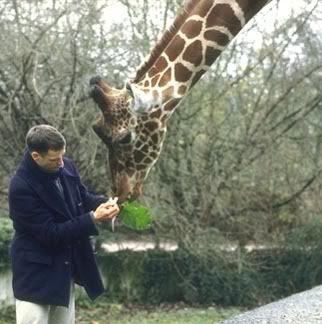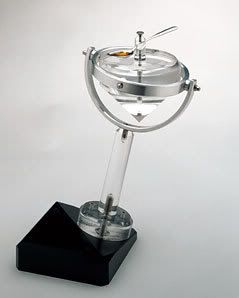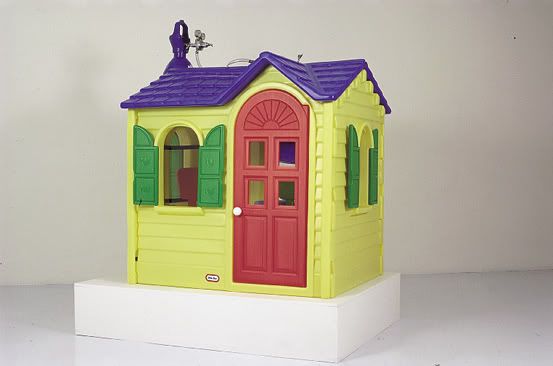In “Stolen Bicycle Pump”

Slominski used the cover of night to find a locked bicycle with an air pump attached to the cross bar of the frame. He then used a hack-saw to cut a section of the frame right out, pump attached. Ignoring the plastic clips that fasten the pump and make for fast removal. The pump and section of the frame are then presented as the art object. The objects are often embedded with the story of the action that preceded them, telling the tale in a glance. This distinct story telling is an important feature of Slominski's work, acting to spread word of the work in a near myth like fashion.
In his 1996 “Licking a stamp”

the artist had a giraffe lick a postage stamp, then affixed it to a letter which was then sent out in the mail. Slominski's art is an exaggerated and painfully blunt model of what most art really is: an exercise in the unnecessary. Slominski doesn't gloss over the fact that his works are more or less pointless and uses this to comment on the self-aggrandizing nature of art. An artwork which so often presents itself as something with a utility and a significance, but at the end of the day, its uses are limited at best to conversation pieces for those already well-versed in art, or at worst, decoration. While Slominski's works often do have a function outside of “art”, its purposes are immediately nonsensical and circular, working in a closed system that is of no relevance to anything other than art.
His 1998 “Cough syrup transport system”

is again testament to this. Slominski worked with a team of scientists to develop a high-tech calibration device that would counter any vibrations or movements that might cause a table spoon of cough medicine to spill. Slominski's production suggests an attitude that like his cough syrup system, teeters back and forth between flippancy and reverence towards the art world. His work calls into question the nature of art and seeks to re-evaluate the “art object” as well as the processes by which they are realized within a structure that places infinite value on items that are apparently worthless.
